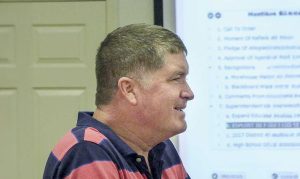By Harold Pease, Ph.D.
The Second Continental Congress, having been convened for six months, had been engaged in the wrestle for or against independence, the vast majority of delegates being decidedly against such drastic action most of this time. Surely there should be a way of reconciling their differences with Great Britain instead.
This was so, even after the battles of Lexington, Concord, and Bunker (Breeds) Hill and the British occupation of Boston. It was summer, 1776, and we were at war.
King George III had already rejected the Colonists’ Declaration of Rights and Grievances, arguing the violation of their rights under British law, and the pacifist Olive Branch Petition, which reaffirmed colonial loyalty to the king and blamed their problems upon Parliament alone. Moreover, he had declared the Colonists in open rebellion.
A full six months prior to the signing a declaration of independence, Parliament had removed the colonies from the protection of the British military, ended all British trade with them, and authorized the confiscation of any American vessel on the seas. Still, delegates could not bring themselves to separate from their “mother,” the British Empire.
On July 1, 1776, the Patriots finally risked “putting the question” to a tentative count but were numbingly shocked by the result. Four colonies — New York, South Carolina, Delaware and Pennsylvania — did not support declaring independence from Great Britain. The Patriots needed to show solidarity. A vote of only nine colonies would show disunity.
This is where the brilliance of John Adams, from Massachusetts, and Richard Henry Lee, from Virginia, came into play. They got Edward Rutledge to use his influence to persuade South Carolina, for the sake of unity, to join those supporting independence, if Pennsylvania and Delaware could be persuaded to do likewise. Convinced that that could never happen, Rutledge agreed.
Next, Adams and Lee worked on Delaware, which had three representatives, one for and another against independence and a third, Caesar Rodney, who was pro declaration, was recuperating from health problems at his farm 80 miles away and probably would not be able to be there to vote the next day. Apparently he had skin cancer and a sore on his face the “size of a large apple.”
The Delaware delegate favoring independence sent a messenger to Rodney to try to get him to the Convention for the vote. This necessitated an 80-mile all-night ride by the sick delegate.
Now they needed to change the vote of Pennsylvania with seven delegates, four of who were against independence. Amazingly Adams and Lee convinced two of these to be absent for voting the next day. This would place Pennsylvania in the camp of the Patriots three to two. New York, without instructions to vote for independence, remained neutral refusing to vote at all.
The gamble was that in these agreements in South Carolina, Pennsylvania and Delaware there existed too many ifs, and would everyone do as promised? They needed a “little miracle,” perhaps three.
Sometime after lunch the next day, July 2, 1776, Caesar Rodney, “caked with mud from head to foot,” having ridden though a severe thunderstorm and torrential rain “entered the assembly room, and when his name was called for Delaware he rose with difficulty but in a clear voice stated: ‘As I believe the voice of my constituents and of all sensible and honest men is in favor of Independence and my own judgment concurs with them, I vote for Independence’”
This “little miracle” made Delaware the 10th colony for a declaration that these colonies were free and independent states. The two lesser “miracles” followed.
Pennsylvania followed as planned when the two con-delegates did not show to vote as promised, leaving a simple majority for independence, and Rutledge kept his word and persuaded South Carolina to become the 12th colony for the sake of unity. With New York abstaining, the Patriots could announce to the world that the vote had carried without an opposing vote. All this happened within 26 hours, when the day before, at 10 a.m., only nine colonies supported independence.
A draft of The Declaration of Independence had been written, reviewed by committee, and tabled on June 28, until after an affirmative vote for independence. This achieved, its finalization by the whole house followed on July 4, 1776, passing 12 to 0, again with New York abstaining.
But could all this be vindicated on the battlefield, as war with Great Britain was certain to follow as a result, that seemed just as improbable perhaps needing additional “little miracles,” or would these men merit only the gallows? But that is a story for another day.
[Dr. Harold W. Pease is a syndicated columnist and an expert on the United States Constitution. He has dedicated his career to studying the writings of the Founding Fathers and applying that knowledge to current events. He taught history and political science from this perspective for over 30 years at Taft College. To read more of his weekly articles, visit www.LibertyUnderFire.org.]









Leave a Comment
You must be logged in to post a comment.